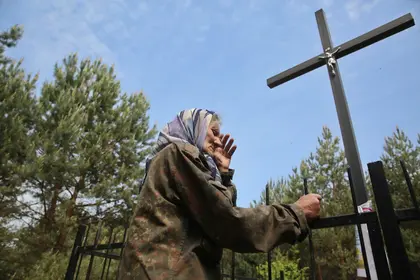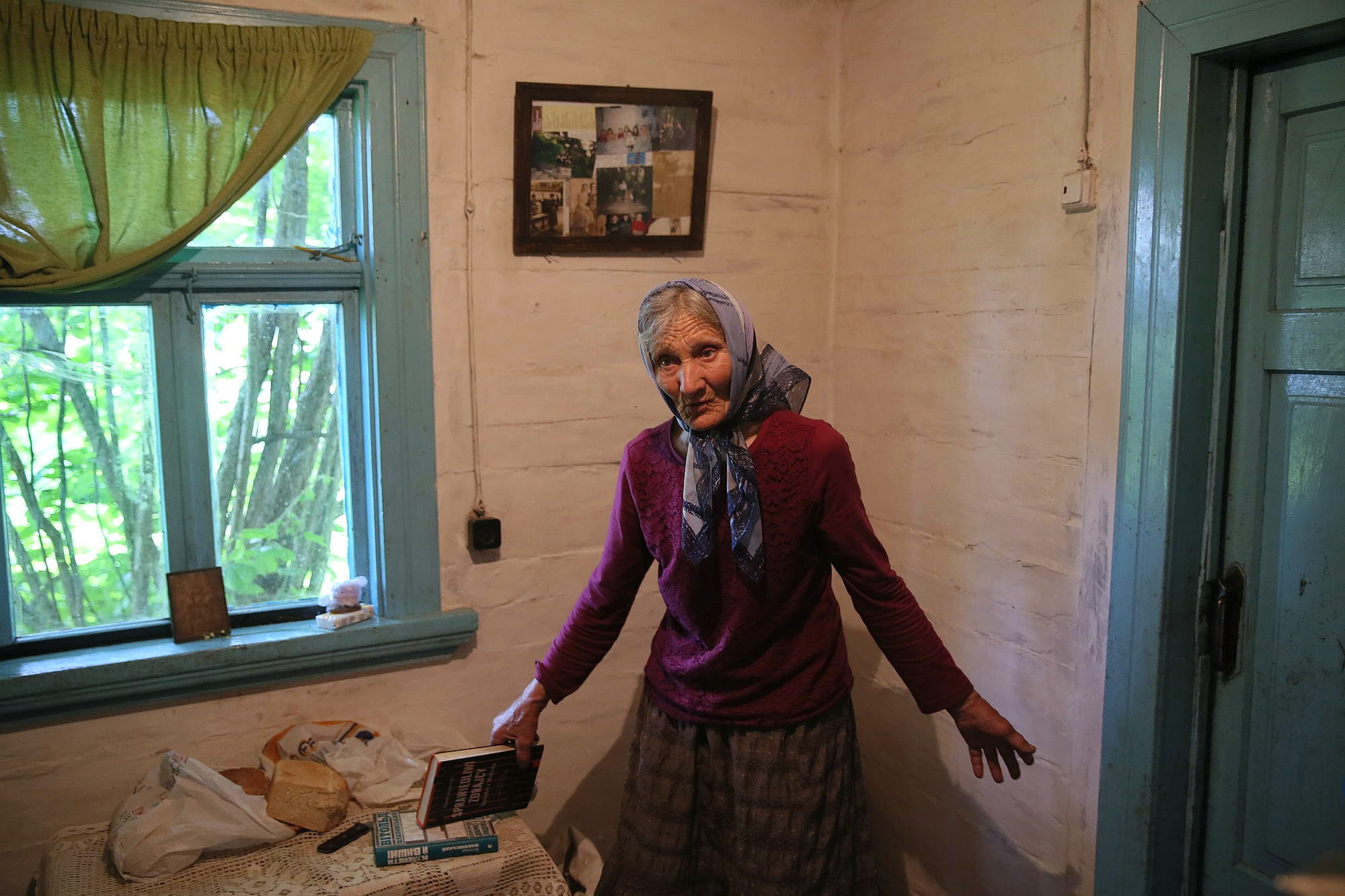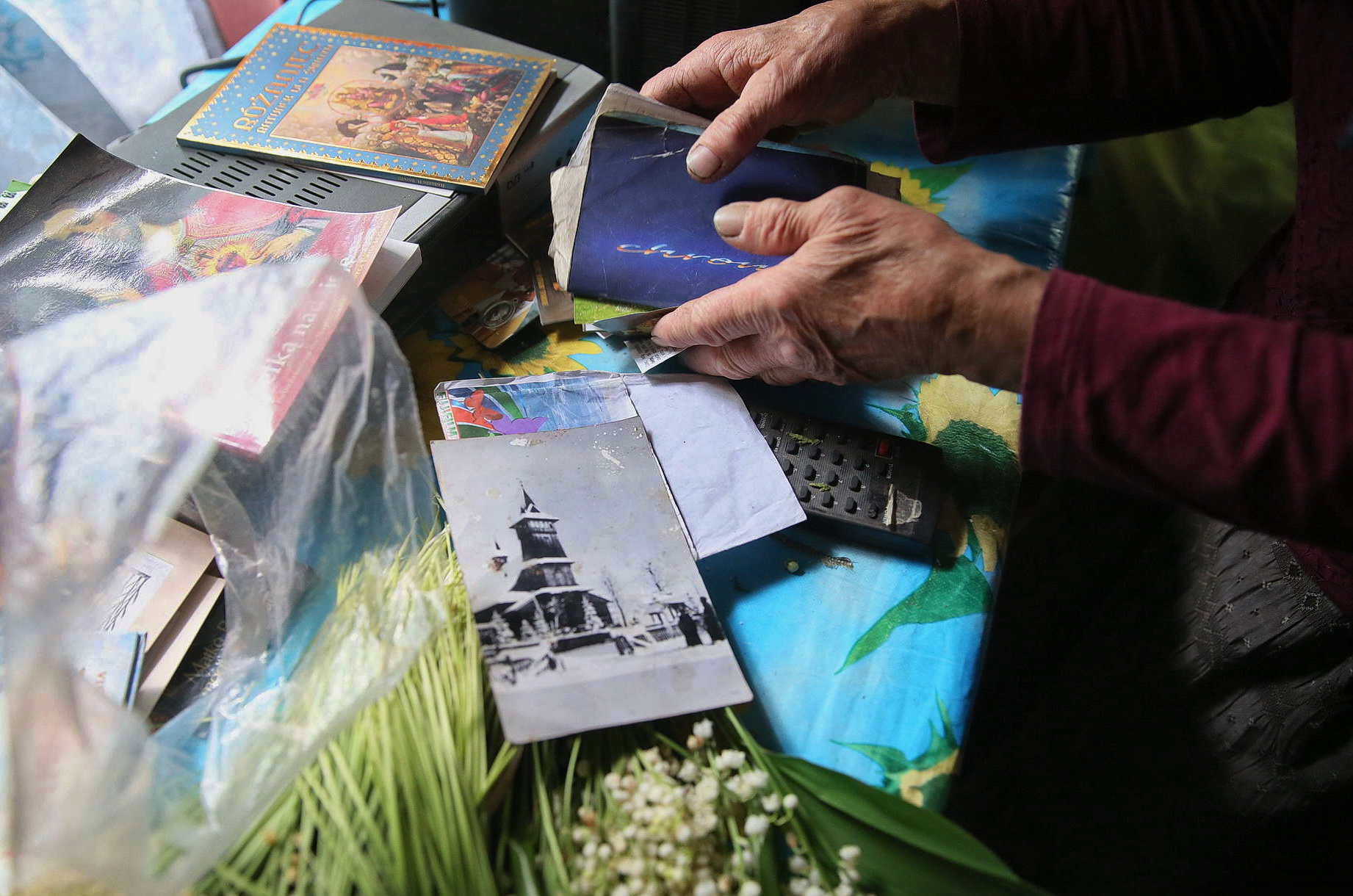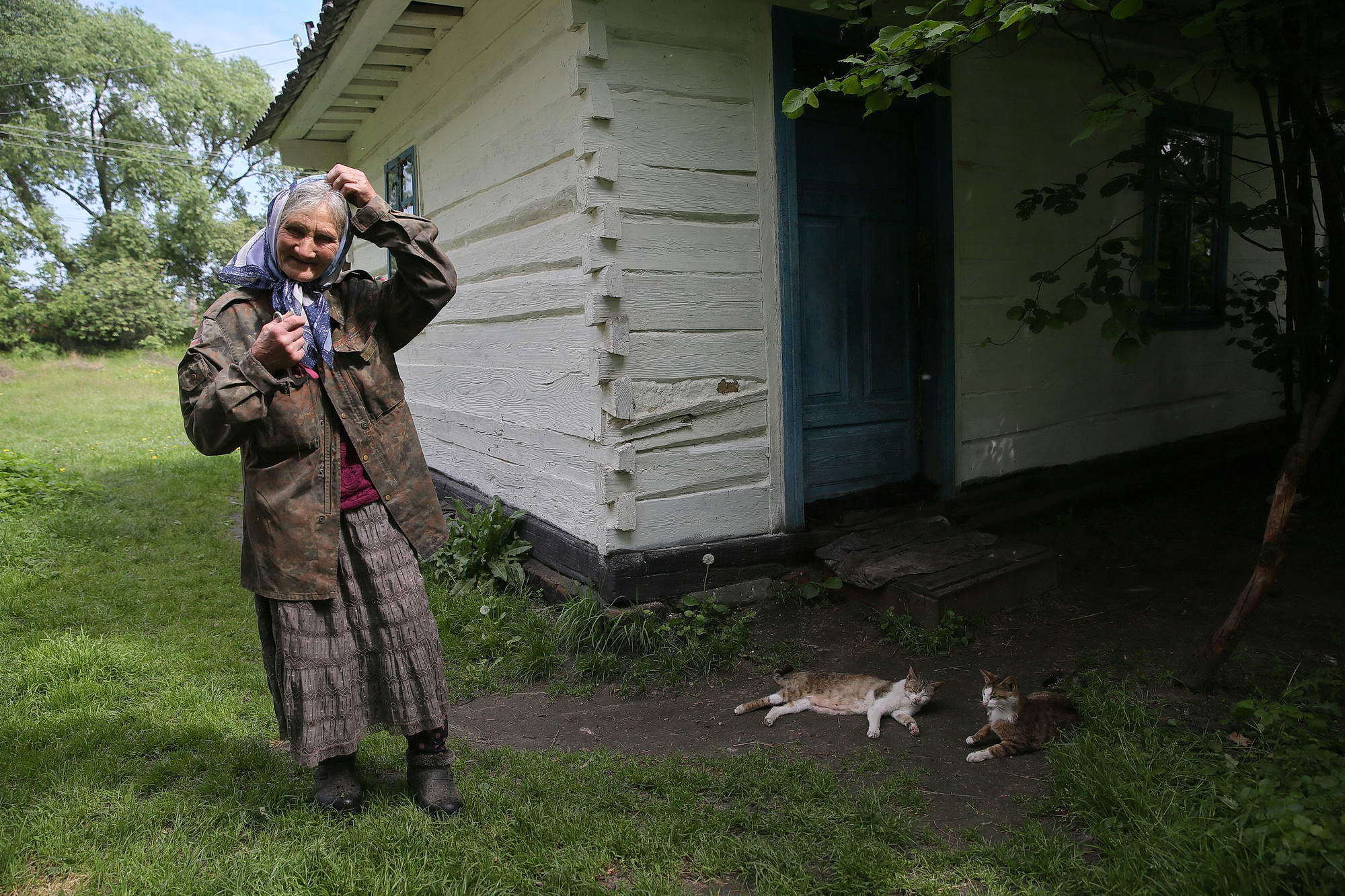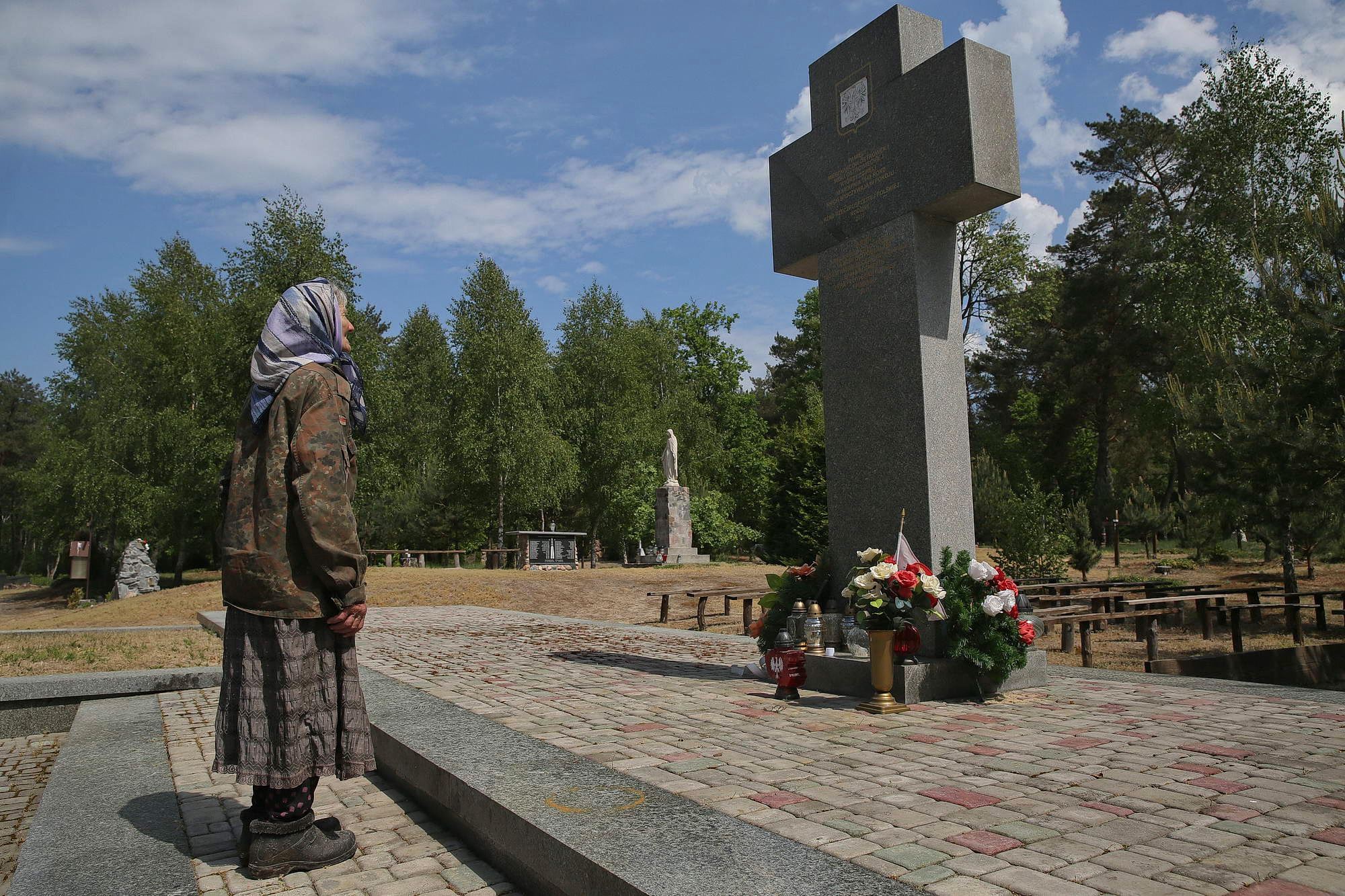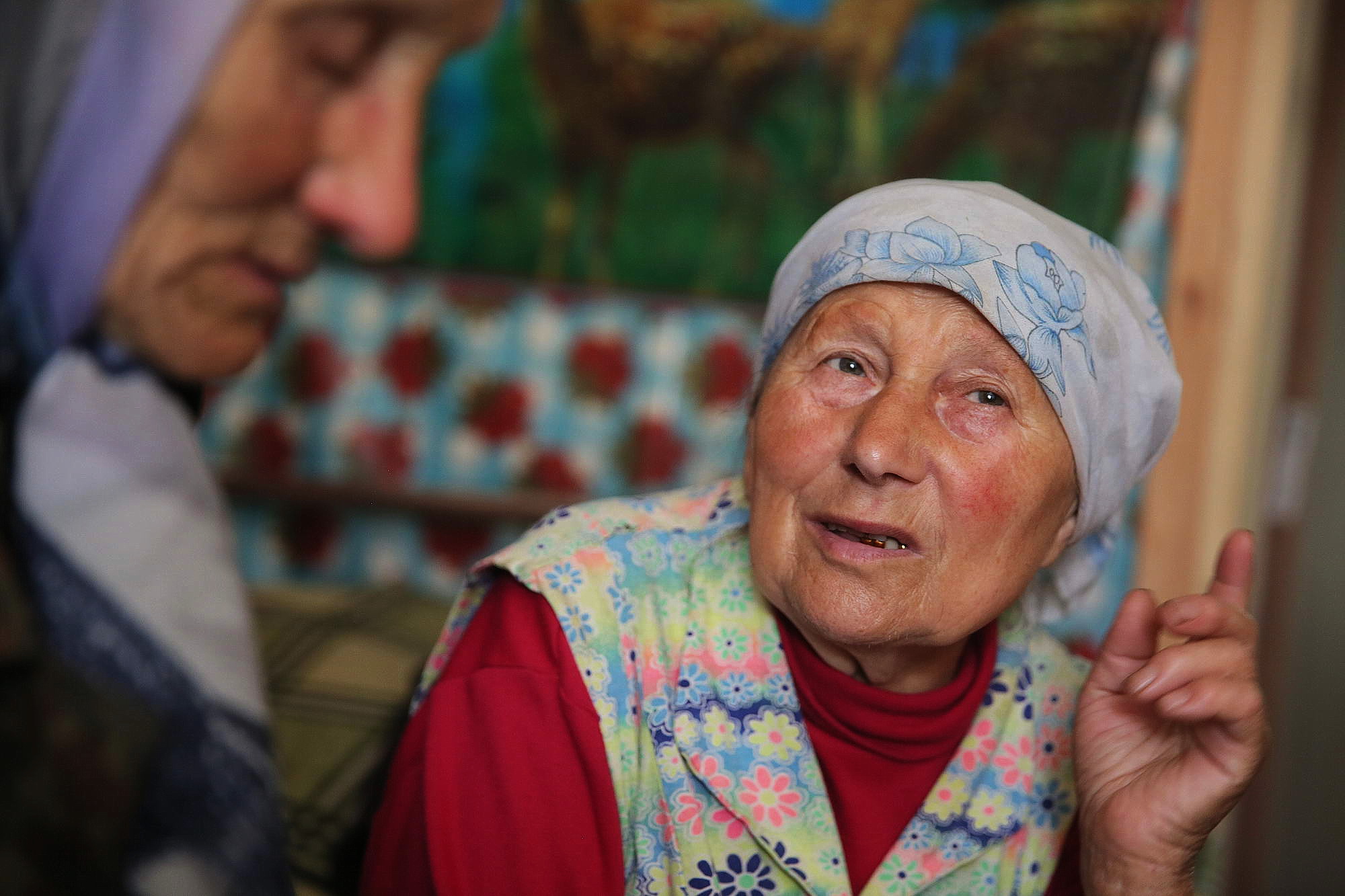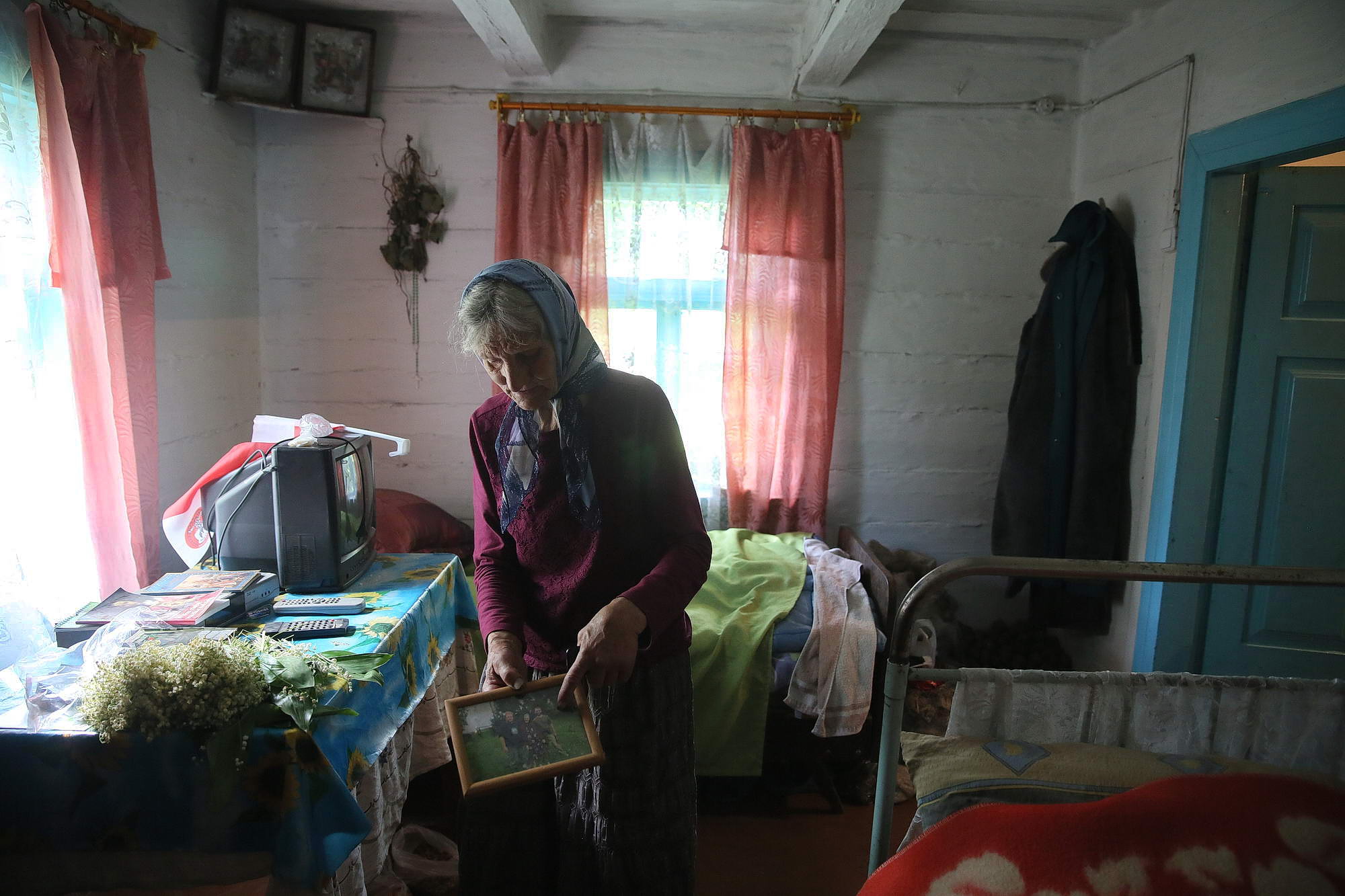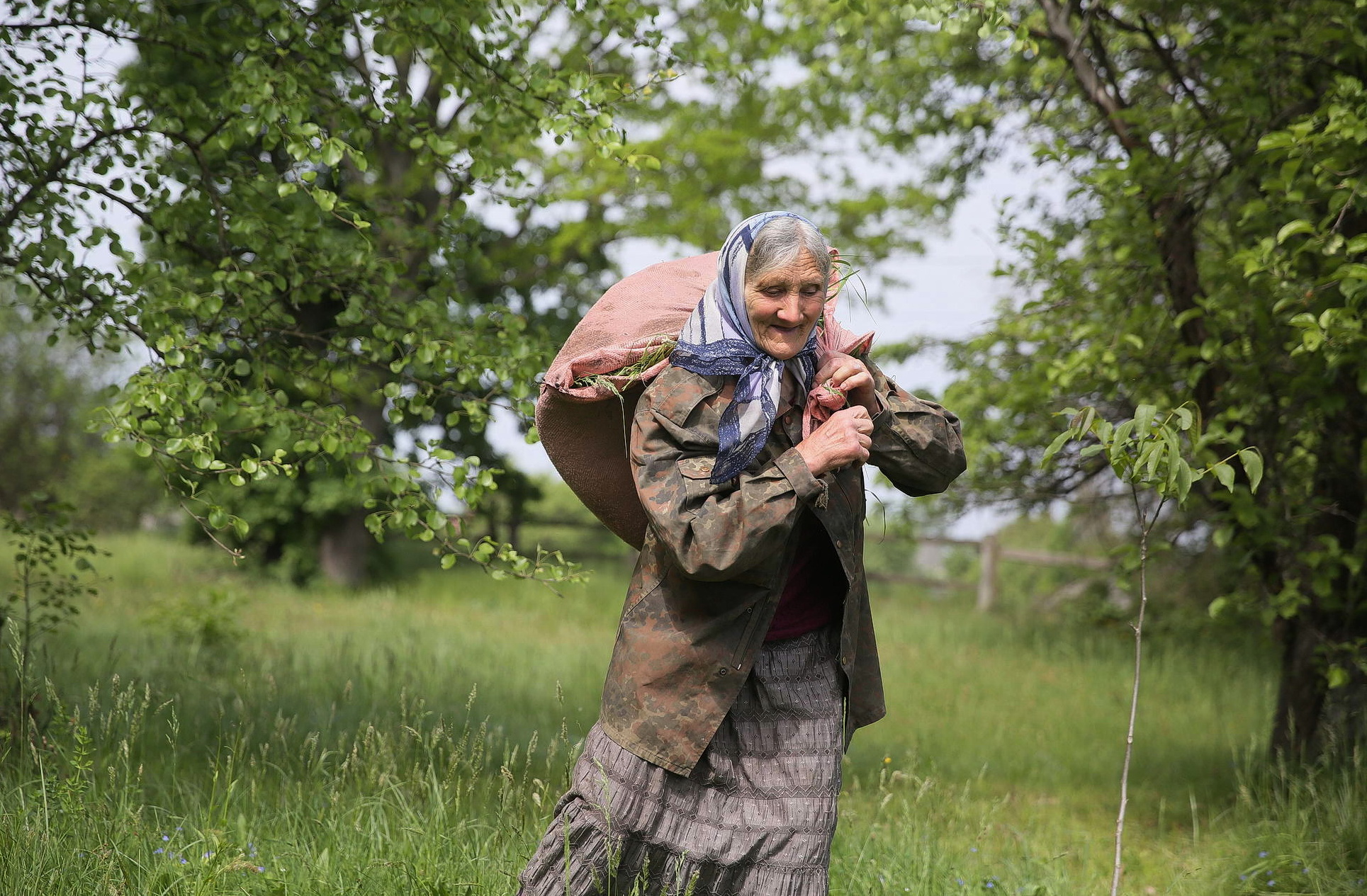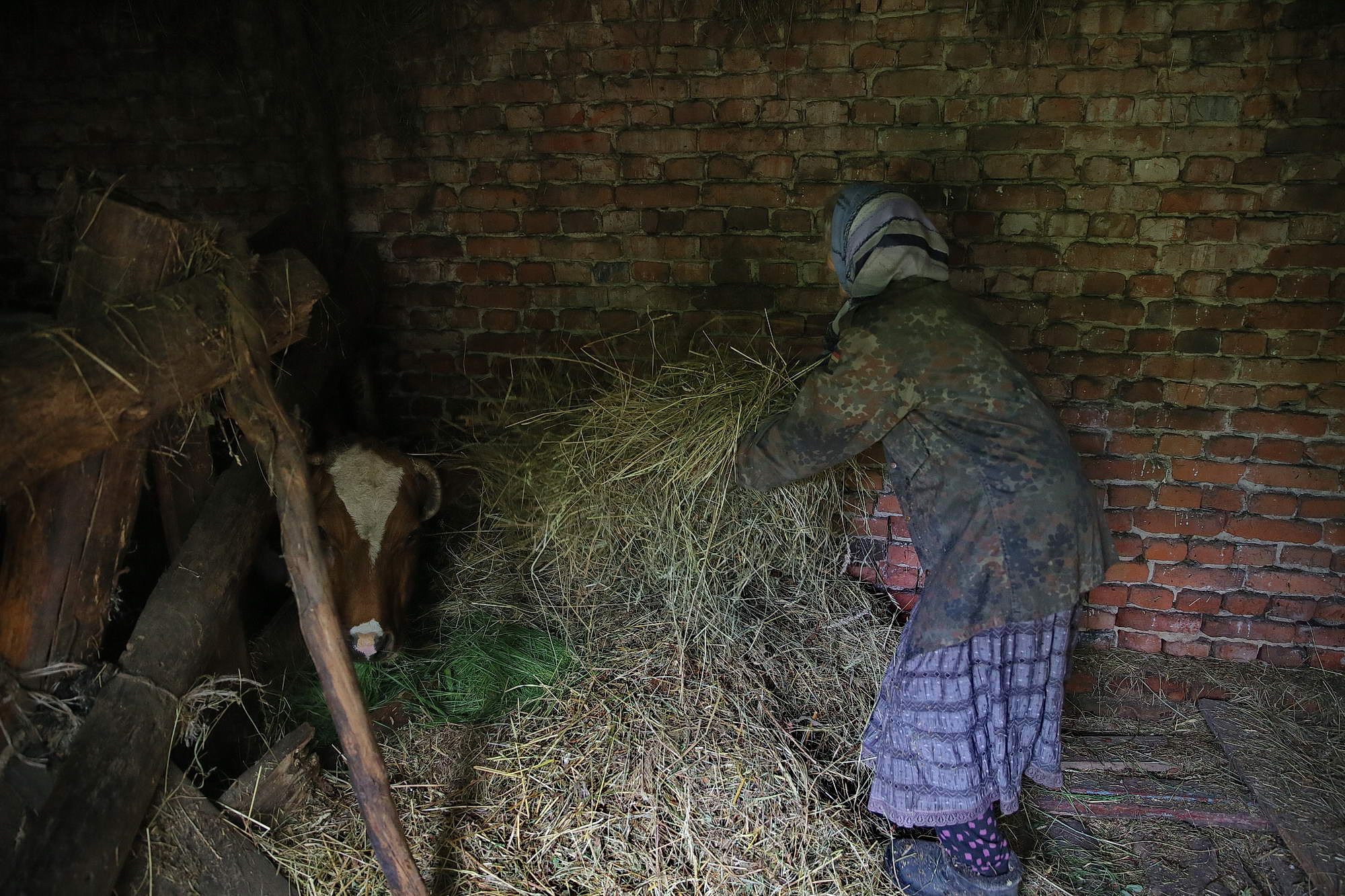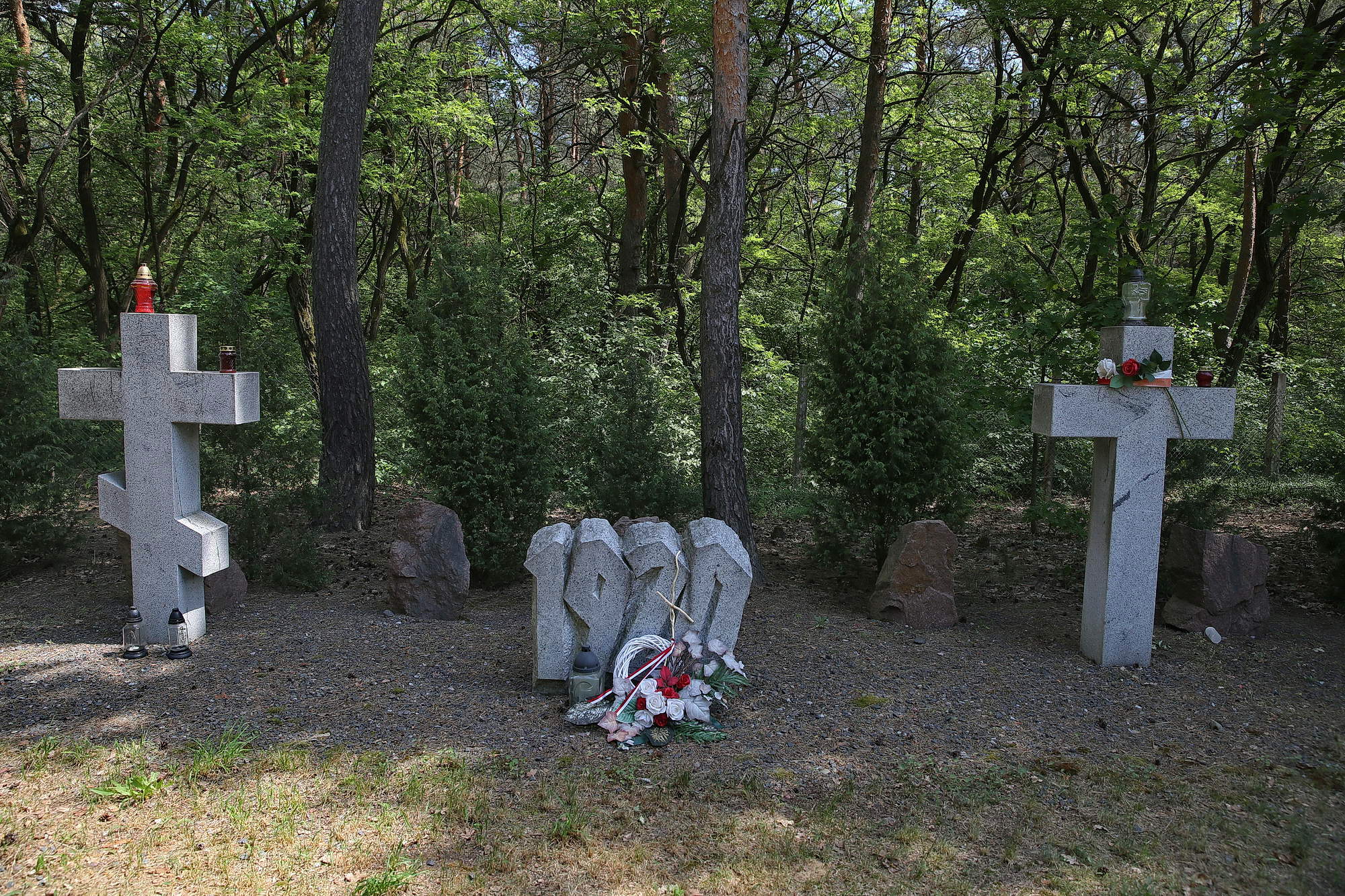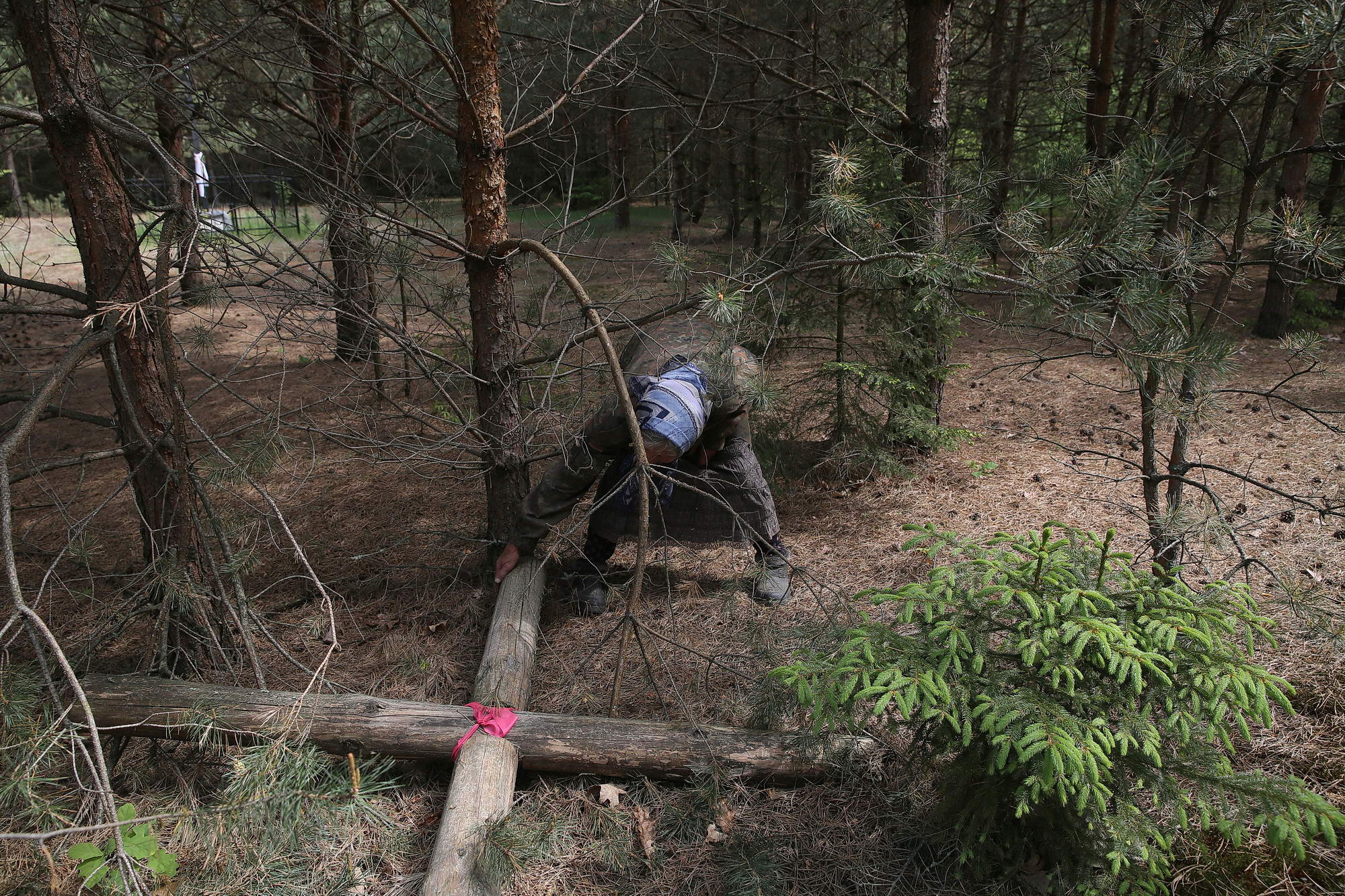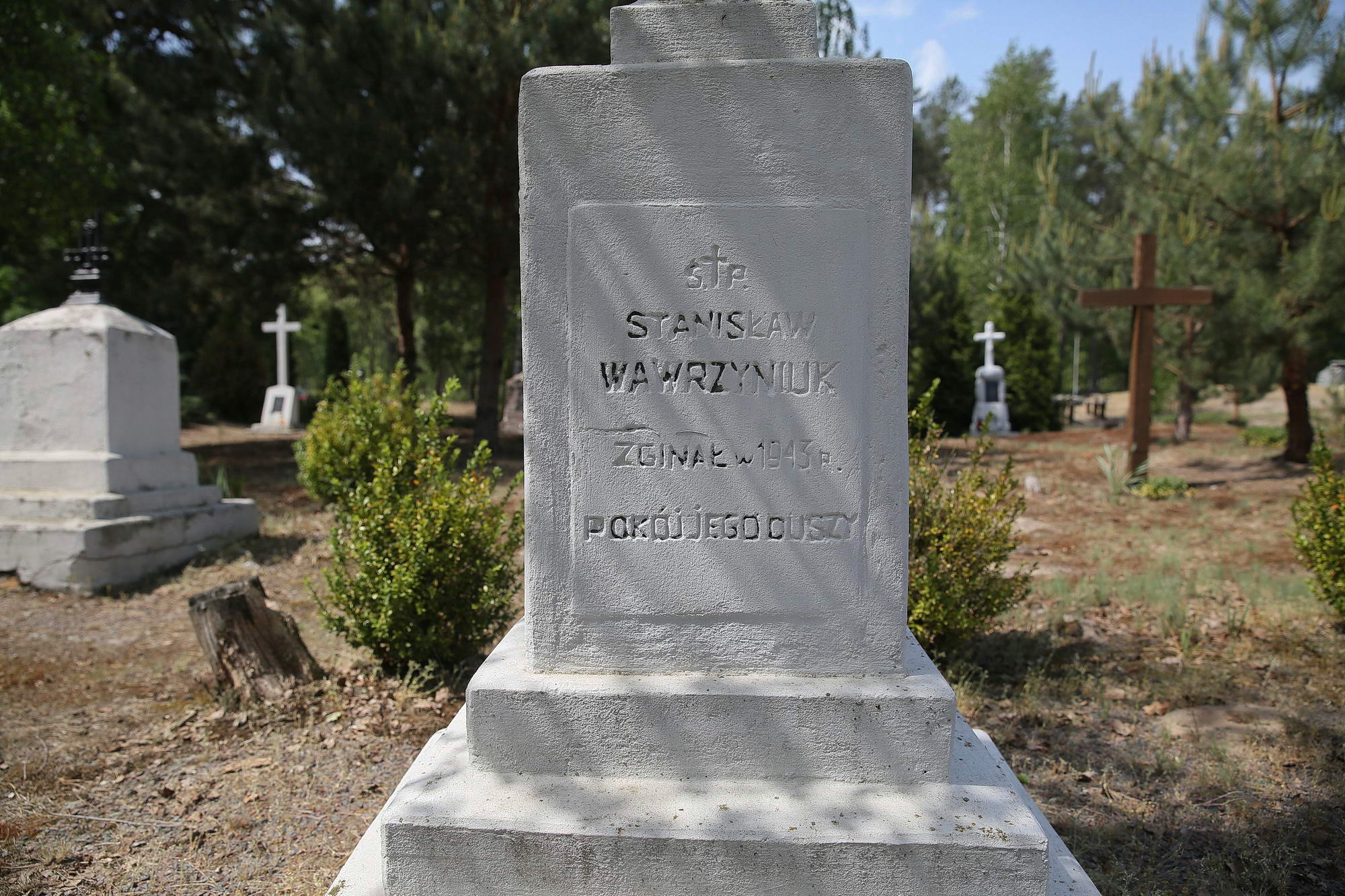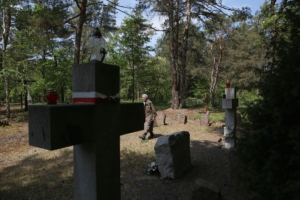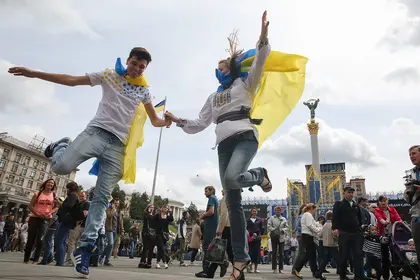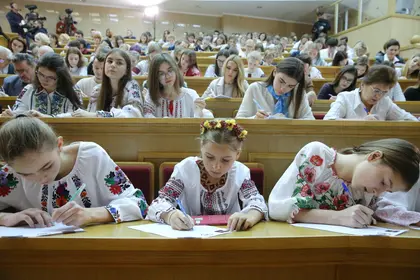Editor’s Note: This is the eighth story in the Kyiv Post’s Honest History series that aims to debunk myths about Ukrainian history. The series is supported by the Black Sea Trust, a project of the German Marshall Fund of the United States. Opinions expressed do not necessarily represent those of the Black Sea Trust, the German Marshall Fund or its partners.
Every now and then Oleksandra Vaseiko, 72, walks alone to the forest glade near her village of Sokil, in Volyn Oblast, 500 kilometers west of Kyiv but close to the Ukrainian-Polish border.
There, the woman hangs a clean rushnyk — a traditional Ukrainian embroidered towel — on an iron cross. It marks the site where about 400 Poles were killed and buried.
They had been residents of the nearby Polish village of Ostrivky, and were killed in August 1943 by soldiers of the Ukrainian Insurgent Army and some local villagers. Some residents of Sokil, including Vaseiko’s father, had helped some Poles escape death. Others looted their empty houses.
Just two months later, armed Poles attacked Sokil and a nearby village Polapy, killing dozens of Ukrainians there and burning many houses.
It was retaliation for the killing of the Poles, according to residents of Sokil and Polapy. At the same time, some locals say the initial attack by Ukrainians was itself vengeance for previous killings by the Poles.
It was one of the incidents of what is now known as the Volyn Tragedy — a series of mutual mass killings of thousands of Poles and Ukrainians in 1943. It is the most bitter episode in the history of Ukrainian-Polish relations, and likely the least studied one.

Honest History 10: How one treaty made Ukraine vassal of Russia for 337 years
It is surrounded by myths and is widely used by politicians in Ukraine, Poland and also Russia to stir tensions between their peoples.
“War is war, but we should learn how to forgive,” Vaseiko, known locally as Grandma Shura, told the Kyiv Post. “But it’s still too hard for our people to start forgiving.”
Bloody 1943
Atrocities of war came to this quiet forested area on Aug. 28, 1943, when a group of soldiers from the Ukrainian Insurgent Army arrived on horseback in Polapy, located next to Sokil, to take part in celebrations of the Assumption of the Holy Virgin, an important Orthodox Christian holiday.
At this point in the World War II, this area was still occupied by the Nazis, although the liberation of Ukraine has already started in the east.
In the morning after the celebration, the Ukrainian insurgents attacked the Polish villages of Ostrivky and Volia Ostrovetska, according to Polapy’s school history teacher Nadiya Malias, who learned about it from locals.
There was a young woman among the Ukrainian soldiers who claimed the Poles had earlier killed her entire family somewhere near Volodymyr Volynsky, a town some 60 kilometers to the south.
The Ukrainians killed most of the Polish residents of Volia Ostrovetska on the spot. But when they went for the nearby Polish village Ostrivky, Nazi German soldiers shot at them.
So instead of killing the villagers on the spot, they dragged them out of the village to the forest and executed them there, according to Witold Szablowski, a Polish journalist who spoke to some Polish survivors. More than 1,000 Poles were killed in that raid. The glade where the residents of Ostrivky were killed and buried is still called the Corpses’ Field by locals.
Vengeance came in two months.
Armed Poles arrived in Polapy on Oct. 14, 1943, another big Orthodox religious holiday. They killed at least 48 Ukrainians, and burned down part of the village, including its old wooden church. Then they went to the smaller village of Sokil and killed those who were unable to run away, Malias said.
Residents and historians disagree on who these armed Poles were — the Polish Home Army resistance group, the Farmers’ Battalion Polish guerilla movement, or some other group.
Olga Silchuk, 77, a resident of Sokil, was just three years old at that time. She says she remembers hiding in the forest with her family, after the Poles burned down her house. Her grandfather, unable to escape, was burned alive there.
The two friends, Silchuk and Vaseiko can’t agree which side, Ukrainian or Polish, started the killings.
“Hate raged then. Each side was killing the other,” Vaseiko said.
Warnings
Silchuk said some of her family’s neighbors had been warned by friendly Poles to run away before the attack on Sokil started.
After the attack on Ostrivky, Vaseiko’s father brought food to a Polish family of three who were hiding in the forest from the Ukrainian insurgents. The family didn’t survive: later he found them murdered, and buried the bodies in the forest.
After the war, he brought his daughter to the place and cut crosses onto the three trees, under which he had buried the Poles, asking her not to forget what had happened there.
Vaseiko showed that site to Polish historians who were exhuming Polish mass graves in the area in the early 2000s.
One of the historians was Leon Popek, whose grandfather, aunt and two cousins were killed in Ostrivky. But Popek’s grandmother escaped a massacre in another Polish village, Hai, thanks to a Ukrainian man who hid her.
Szablowski described these stories in a book about Ukrainians who had saved Poles during the incidents of ethnic cleansing, “Righteous Traitors. Neighbors from Volyn” (2016).
He believes the topic could be a path to reconciliation between the two nations.
“I thought this was the way we could start talking to each other,” he said.
Polish historian Grzegorz Motyka in his book “From the Volyn Massacre to the Operation Vistula. Polish-Ukrainian conflict” (2011) also wrote that more than 1,800 Poles had been saved by Ukrainians from being massacred in Volyn.
Why Volyn?
In the early 20th century the historic Volyn area, which is now part of the modern Ukrainian Volyn and Rivne oblasts, and northern part of Ternopil Oblast, passed from Russian imperial control to the Ukrainian National Republic. Then in 1921 it became part of the Second Polish Republic, where it was called the Volhynian Voivodeship.
It was a multiethnic area, inhabited by Ukrainians, Poles, Jews, Czechs, Germans and other nationalities.
But Ukrainians living in the Second Polish Republic felt like second-class citizens.
The Polish authorities attempted to assimilate them, closing down Ukrainian schools and Orthodox churches. The authorities also allocated the best farmland in the area to osadniks — settlers, who were veterans of the Polish Army or Polish civilians.
As a result, both the Soviets, who came to Volyn in 1939, and the Nazis, who replaced them in 1941, were at first hailed as liberators. But it soon became clear that both had brought even more repression to the locals.
Still smarting from the bitter loss of their independent state after the war in 1918–1919, Ukrainians were gradually shifting their support to radical nationalists. The Organization of Ukrainian Nationalists (OUN) in its more radical branch under Stepan Bandera, and its military wing, the Ukrainian Insurgent Army (UPA), were quickly gaining new recruits.
In 1943, when it was clear the Nazis would soon be in full retreat, thousands of Ukrainians left the German auxiliary police and joined the Ukrainian insurgents. The German authorities then in many cases replaced the Ukrainians in their auxiliary forces with Poles.
The woodland of Volyn region was an ideal place for the guerrilla war that the Ukrainian insurgents waged against the Nazi authorities, the Soviet partisans and local Poles, with the goal of establishing an independent Ukrainian state. But the unarmed Poles were the easiest target.
Historians disagree over who started the violence — the Ukrainians or the Poles. But a set of simultaneous attacks on Polish villages by members of the Ukrainian Insurgent Army in the summer of 1943 indicates that the violence had been organized at the central command level, according to Ukrainian historian Georgiy Kasianov.
“Although nobody has ever found a written order by (head of Ukrainian Insurgents Army in Volyn Dmytro) Kliachkivsky or anyone else, such coordination shows the attacks were planned,” he said. “They had the aim of ‘cleaning’ the area of Poles.”
Since the killings were committed not only with the bullets but also with the axes and pitchforks, some Ukrainian villagers evidently participated in the ethnic cleansing as well, Kasianov added.
Historians say Kliachkivsky and Roman Shukhevych, the leader of the Ukrainian Insurgent Army, were responsible for planning the attacks, Kasianov said.
On July 11–12 alone, Ukrainian insurgents attacked about 100 Polish villages. July 11 is now a day of commemoration in Poland for the victims of the massacres.
The attacks prompted the Poles to self-organize and ally either with the German authorities or the Soviet partisans to get arms for self-defense. The Polish Home Army started retaliatory attacks against Ukrainian villages, though these attacks were of a much smaller scale than those launched by the Ukrainian side.
How many killed?
The number of alleged victims of the massacres vary drastically due to lack of research, and myths that hundreds of thousands of Poles and tens of thousands of Ukrainians were killed have sprung up.
Polish historian Motyka estimates that 40,000 to 60,000 Poles and 2,000 to 3,000 Ukrainians were killed in Volyn during the clashes.
However, Ukrainian Kasianov believes that a more accurate estimate of the number of Poles killed in Volyn is close to some 35,000. He says that most of the original estimates were based on the memories of survivors, and when the first exhumation work started, the number of victims was revised downward.
The exhumations of the victims, which started in the early 1990s, have later been blocked for bureaucratic reasons.
Szablowski knows of about 2,000 of victims’ burial sites in Volyn, only a few have been checked so far. This prevents the number of victims from being established accurately, and denies thousands of murdered people a dignified burial.
“For me, this is the most painful aspect of the Volyn Tragedy,” Szablowski said.

War of memories
The Volyn massacres have become a grizzly subject of political campaigns, with the occasional acts of vandalism of both Polish and Ukrainian monuments to the dead.
In April 2015, the Ukrainian parliament passed a law that bans displays of disrespect to fighters for Ukraine’s independence, and that includes fighters of the Ukrainian Insurgent Army.
In turn, in July 2016, Poland’s lower house of parliament the Sejm passed a resolution declaring the killings of Poles by Ukrainian nationalists during World War II an act of genocide. Ukraine noted this move with “regret,” President Petro Poroshenko said at the time.
The mutual ill feeling between Ukraine and Poland has been further stoked by Russian propaganda. The Russian-backed separatists that control the Ukrainian eastern city of Donetsk since 2014 hold annual commemoration events for the Polish victims of the Volyn massacres. They also occasionally host pro-Russian Polish politicians.
The Polish security services recently said they had uncovered a pro-Russian group that had sought to fuel tensions between Poland and Ukraine by “undermining interpretation of Polish history and replacing it with a Russian narration.”
“There is no any other topic that could make us fight each other, apart from the Volyn massacres, and (Russian President Vladimir) Putin knows well how to use it,” Szablowski said.
Top myths about the Volyn massacres
Myth 1: Ukrainians and Poles never collaborated with the Nazis
Fact: Ukrainians living in Volyn first welcomed the coming of the German Nazis, seeing them as liberators from Soviet and Polish repression and a way to achieve an independent Ukrainian state. But the life in the Nazis’ Reichskommissariat Ukraine, which included Volyn, was even more brutal, and snuffed out those illusions. In 1943, thousands of Ukrainian men left the German auxiliary police and joined the Ukrainian Insurgent Army to fight against the Nazis. They were replaced by thousands of Poles, who often allied with the Germans to defend themselves from Ukrainian insurgents.
Myth 2: Hundreds of thousands were killed in Volyn
Fact: Exhumation work at the mass graves of the victims of the massacres show that tens of thousands of Poles and several thousand Ukrainians were killed in the Volyn massacres. The inflated numbers of victims are widely used by politicians but have never been confirmed by historians.
Myth 3: All Ukrainians were against Poles and all Poles were against Ukrainians
Fact: Ukrainians and Poles had lived in Volyn for centuries side by side, becoming friends and relatives. Historians indicate thousands of cases of civilians saving people of both groups saving each other from ethnic cleansing. Many refused to abandon spouses or parents who belonged to another ethnic group, and were persecuted for this by nationalists.
Myth 4: All Ukrainian guerilla fighters took part in killing Poles
Fact: Historians have proof that mass killings of Poles were conducted by soldiers of the Ukrainian Insurgent Army, though some leaders of Organization of Ukrainian Nationalists (such as Mykola Lebed) didn’t approve of the killings. Taras Bulba-Borovets, the leader of the Ukrainian armed units that were also operating in Volyn, condemned the killings of Poles and banned them, but some of his soldiers disobeyed his orders.
Myth 5: The Volyn massacres were a Polish-Ukrainian war
Fact: The killing of unarmed civilians by the guerrilla fighters was a case of ethnic cleansing rather than war. Although some Polish villagers managed to organize defenses against attacks by Ukrainian nationalists, this was not common. Polish guerillas also committed ethnic cleansing of Ukrainian villages, but on a much smaller scale, and only sporadically.
Ethnic change in Volyn region
The ethnic attacks that started in Volyn in 1943 then spread to eastern Halychyna and parts of modern Poland, adding to the number of victims on both the Polish and Ukrainian sides. Motyka estimates that up to 100,000 Poles and 15,000 Ukrainian civilians were killed from 1943 to 1947.
The ethnic violence led to a population exchange between the Soviet Ukraine and socialist Poland in 1943–1947, and then to Operation Vistula in 1947– the forced resettlement of Ukrainians from the southeastern provinces of Poland to the west of Ukraine.
The dreams of Ukrainian nationalists to make Volyn ethnically homogenous had come true, but due to the Soviets’ ethnic cleansing efforts.
According to a population census conducted in 1921, only 68 percent of the population of Volyn were Ukrainians, almost 17 percent were Poles, almost 11 percent were Jews, almost 2 percent were Czechs and nearly the same number were Germans. But in 2001, Ukrainians composed almost 97 percent of the population of Volyn Oblast and almost 96 percent of Rivne Oblast.
Olga Silchuk, 87, from Sokil still remembers the pre-war multinational Volyn where “all were like relatives and lived in friendship.”
She can also recall how that world was destroyed during World War II.
Silchuk remembers the taste of chocolate given to her by a German soldier, and how she had stepped over some Russian-speaking fighters who were sleeping soundly in her family’s house. She remembers how she brought her mother’s food to a group of Jews hiding from Nazis. She remembers her grandfather being burned alive in the house by vengeful Poles and her father being killed by the Soviet authorities, who thought he was a Ukrainian guerilla fighter.
“One evil led to another,” she said.
You can also highlight the text and press Ctrl + Enter


